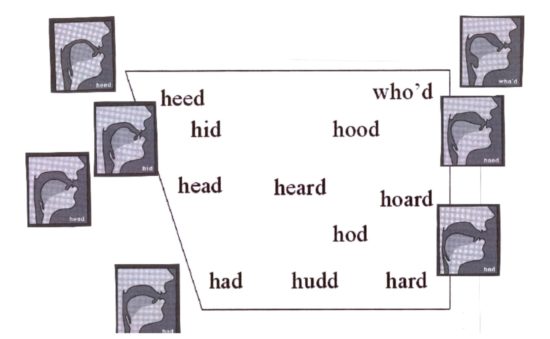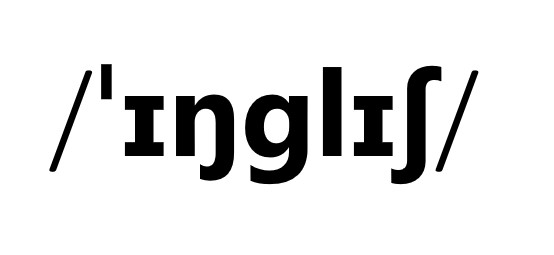Vowels are less easily distinguished than consonants because there are no distinct boundaries between them as there are for consonants, and so they are usually described according to how they sound in relation to one another. Unfortunately, any phoneme can still vary quite a bit, and still count as an instance of that phoneme. Vowels in particular may vary in length, roundedness, pitch or nasality without becoming unintelligible.
A vowel differs from a consonant in that it has no obstruction or contact between different parts of the mouth or other speech ‚organs‘ and it is always voiced. Still, vowels, like all phonemes, are pronounced using different parts of the mouth. Recall the vowel chart from the post on front and central vowels.
The vowels you see on the right there are the ones pronounced in the back of the mouth. They differ, of course, based on how open or closed the mouth is when they are pronounced. Now watch the video for some more information about the so-called back vowels.
Below you can hear the sounds of all the vowels as they go around the mouth, from front top down and then up in the back (see the image). This speaker is American, so a number of vowels differ from those in British Received Pronuciation (watch this space for another recording of that variety).

If you like, you can try listening and repeating to feel how and where the sounds are produced in your own mouth. Try to reproduce exactly the sounds you hear. Rewind and repeat as often as you like.
Then, you might want to try some exercises on both distinguishing the back vowels you hear and pronouncing the vowel sounds needed.


